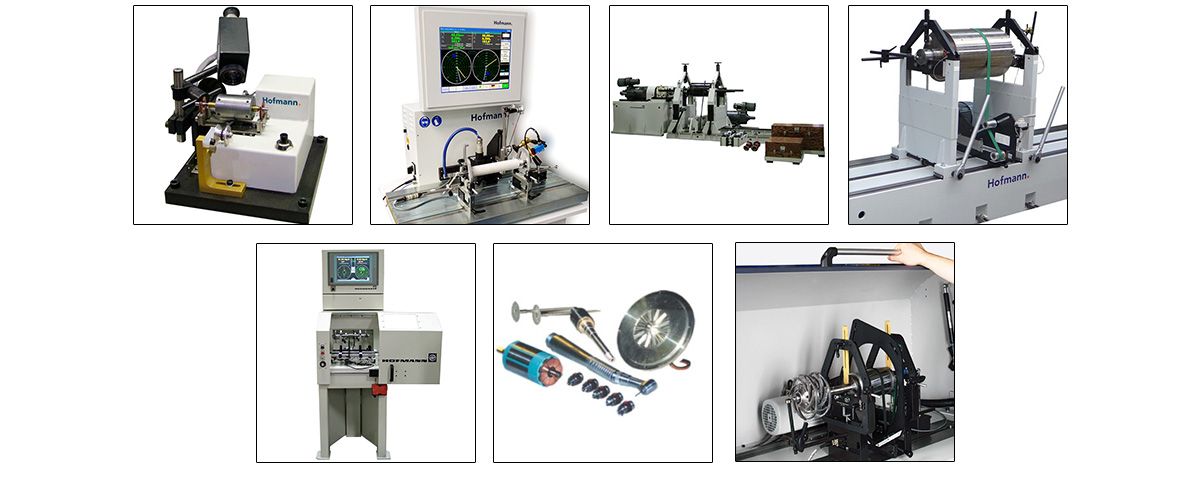
Manufacturers, OEMs, overhaul and repair shops, and end users apply Hofmann universal, horizontal systems for a variety of applications. Horizontal balancers can be used for rotor diameters from 0.3 mm to parts greater than four meters in diameter, and weights from 30 mg to 500 tons. Balancing speeds can range from 60 rpm to over 200,000 rpm, as needed for accuracy in measurement. Our standard balancing machines offer a variety of drives, support systems, instrumentation, and safety enclosures or fencing…engineered for your specific balancing applications. Our “economy” models provide Hofmann quality balancing at a lower price.
Three standard drive systems are available: belt-drive, end-drive, and combination belt- and end-drive. These drive systems use variable speed motors and, if required, multiple gear transmissions. The belt-drive system is the most versatile and easiest to use. The large area of contact between the belt and part provides excellent transmission of drive and brake torque. This system is ideal for a wide range of rotor diameters. Belt drives with pneumatic tensioning automatically adjust the belt to eliminate slippage or strain. The end-drive system is typically used for parts that require a high drive torque or present serious windage problems. The combination drive systems enable the user to accommodate a variety of rotors.
Several standard support systems are available from American Hofmann for horizontal machines. These include roller bearings, half-shells, and V-blocks. Roller bearings are used for most parts and come in a variety of sizes. These rollers are spherically ground to minimize surface contact with the part and any influences on measurements. Half-shells and V-blocks are preferred for rotors balanced in their own bearings. When using a rotor’s own bearings, the support system must allow them to rotate about a vertical axis so measurements are not affected by bearing misalignment.